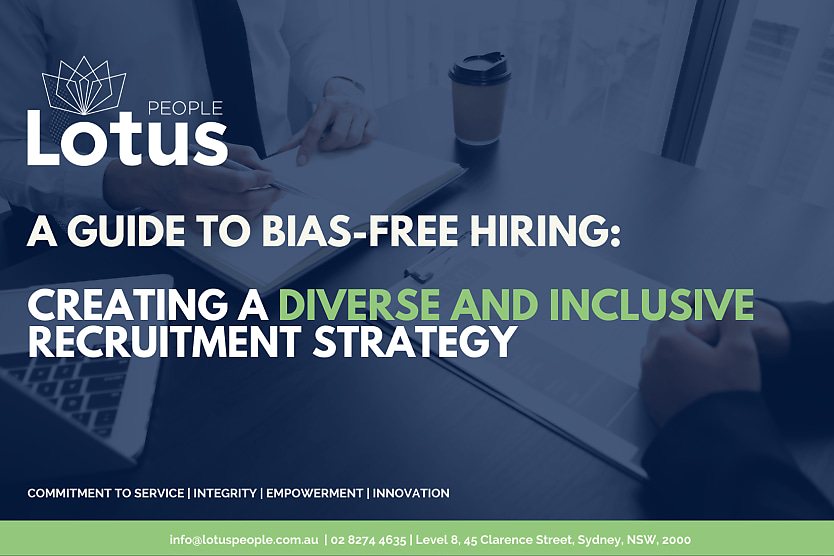Bias-free hiring: Establishing an inclusive and diverse approach to recruitment
SHARE THIS ARTICLE

A workspace that promotes safety and inclusion goes beyond being just a passing trend - what exactly should you do to initiate these bias-free recruitment changes?
Over the last three years, the Australian recruitment market has weathered a whirlwind of challenges - from the global pandemic and the widely reported 'great resignation' to an escalating demand for workers. Amidst these seismic shifts, one fact remains: modern jobseekers are hunting for more than just a substantial paycheck.
Today, the spotlight shines on both professional and personal values like work-life balance, prospects for growth and development, a supportive company culture, and critically, a safe working environment. Building a workspace that offers psychological safety, inclusion and zero discrimination is not merely a trend but an integral element in fostering a strong company culture and enhancing team collaboration.
But Diversity and Inclusion is a big ticket item, with many companies not knowing where to start. So, to start to make progress, what are the building blocks for creating such a workspace?
Diversity, Equality, and Inclusion in Recruitment
Diversity, Equality, and Inclusion (DEI) form the linchpin of a bias-free hiring process. Diversity is the acknowledgment and celebration of the wide range of individual differences among people. Equality, on the flip side, champions fairness and equal treatment for all candidates and employees, irrespective of their background, role, or personal characteristics. Lastly, inclusion is about crafting an environment where every employee feels valued, respected, and supported, with equal opportunities for growth.
Notably, a robust DEI strategy results in more than just improved talent attraction and increased employee retention rates. It's also a proven catalyst for innovation and creativity. Research by McKinsey in 2020 shows that companies with greater gender diversity at executive levels are 48% more likely to outperform their competitors. A similar trend applies to ethnically diverse companies.
Developing a Winning DEI Strategy
A key question for HR leaders is: where do you start when creating a DEI-friendly workplace? At Lotus People, our human-first approach and proud legacy of winning the Best Agency in Candidate Experience award for three consecutive years offer us a unique vantage point on this issue.
Creating a Diverse and Inclusive Workplace
-
Diversify Your Candidate Pool: Expand your recruitment efforts to attract a diverse group of candidates. Consider partnering with organisations focusing on underrepresented groups.
-
Provide Training: Equip hiring managers and recruiters with the tools to reduce unconscious bias and increase awareness on DEI matters. Providing training across topics such as neurodivergence, gender bias and equality in the workplace can help educate the entire team.
-
Foster an Inclusive Culture: Promote respect for differences, make reasonable adjustments and create an environment where everyone feels valued. Consider starting a DEI committee.
-
Set DEI Goals: Begin with small, achievable company goals for fostering a diverse and inclusive workforce, and involve your entire team.
-
Promote Equal Pay: Regularly run analyses to ensure women are paid equally to men, considering the national gender pay gap.
Remember to use inclusive language, promote open feedback systems, and ensure the creation of safe spaces for all employees.
In conclusion, keeping a human-centric focus, approaching recruitment with empathy, and being dedicated to your DEI strategies can significantly shape a safe and inclusive workspace. Building a healthy workplace culture is a journey, not a destination. But with a team that's genuinely committed to addressing bias and promoting equality, businesses can make significant strides.
RELATED TERMS
The practice of actively seeking, locating, and employing people for a certain position or career in a corporation is known as recruitment.


